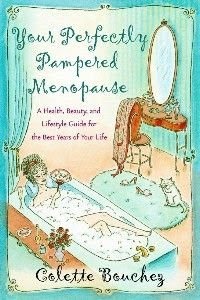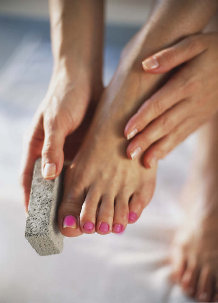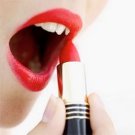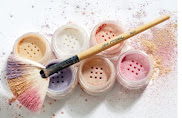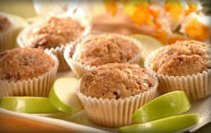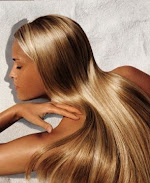 The promises are heady and hard for any woman to resist: Weight loss, smoother skin, less cellulite, increased collagen production and a whopping increase in bone density – not to mention stronger muscles.
The promises are heady and hard for any woman to resist: Weight loss, smoother skin, less cellulite, increased collagen production and a whopping increase in bone density – not to mention stronger muscles.
And all without even breaking a sweat.
Now if it all sounds too good to be true…you’re partly right. Not all of the claims have merit.
But, experts say this new form of working out does have some value –with at least some research showing it can accomplish at least a few of it’s claims.
“ It can’t do everything it claims, but it does have an important effect on muscle strength and it can help increase circulation, particularly in those who can’t participate in other forms of exercise, “ says Ben Quist, a physical therapist, and owner of the Milwaukee training center Form and Fitness.
WBV works, says Quist by using vibrations to trick the body into thinking you are falling. When your muscles respond – by trying to stabilize you - the conditioning begins. Quist says most people stand on the platform with knees bent at about a 30 degree angle, while underneath vibrations occur at an astounding 30 times per second!
“It’s all about rapid muscle contraction, which is actually what’s happening – your muscles are responding to the sensation that you are falling by working to stabilize you and that’s where the benefits lie, “ says Quist.
For women, WBV may even offer more benefits, with studies indicating the vibratory activity acts much like a weight bearing exercise, putting pressure on bone and helping to increase bone mineral density.
In one study of 90 postmenopausal women published in the Journal of Bone and Mineral Research in 2004, researchers noted a 1.5% increase in hipbone density and increased muscle strength among those using the vibrating platforms 3 times a week for six months.
“At our gym one of the primary uses for these platforms, by women, is to increase bone density – and it really does seem to work,” says Quist.
Additionally, experts say it can be a terrific way for those with limited mobility to exercise their muscles, such as patients with MS, Parkinson’s or some forms of arthritis.
One study published in the Journal of the American Geriatric Society noted that seniors unable to participate in traditional exercise were able to experience muscle strengthening and speed-of-movement benefits from working out on vibrating platforms.
Bad Vibrations: What You Should Know
First and foremost, working out on a WBV is not quite as easy as it sounds. In fact, even seasoned athletes find that initially they can’t take more than 15 minutes of the rapid activity at a time. Most folks, says Quist, can tolerate 3 to 5 minutes and then have to get off and rest before continuing.
So, even the results that are possible are going to take a while to achieve.
Next, claims of weight loss, effects on cellulite, and smoother skin all seem highly exaggerated.
“There is really no credible science here,” says Quist.
Dr. Cedric Bryant, president of the American Council on Exercise, agrees.
“WBV can cause muscle contractions, and we assume that increases tone, strength and stability, but we don’t have long term studies showing this is true – and at the moment the media hype is definitely outpacing the science,” says Cedric Bryant, PhD, president of the American Council on Exercise
Rusty Varlotta, MD, a physical therapist at the Rusk Rehabilitation Center at NYU –Langone Medical Center in New York City remains totally unconvinced it can- or should – replace conventional exercise, particularly for women looking to increase bone density.
Says Varlotta: " We know that walking two miles a day is an effective way to build bone – and I think it's okay to use this equipment as an adjunct to your normal exercise routines, but to rely on it solely, we’re not there yet.”
The bottom line: If you want to give whole body vibration a try, it can’t hurt. But for the moment, use to augment, not replace more traditional forms of exercise, including some heart-healthy aerobic activity, and plain old walking!
You might also enjoy reading:
Thursday, July 31, 2008
Good Vibrations: New Way To Lose Weight?
Monday, July 28, 2008
Return of the Face-Lift: & Other Ways To Avoid Growing Old
 With all the nifty new wrinkle injections on the market – and the recent study showing that completely non-invasive laser treatments are an effective anti-aging treatment - one would think that the traditional surgical face lift would go the way of … big shoulder pads and Flashdance hair.
With all the nifty new wrinkle injections on the market – and the recent study showing that completely non-invasive laser treatments are an effective anti-aging treatment - one would think that the traditional surgical face lift would go the way of … big shoulder pads and Flashdance hair.
But surprisingly, it hasn't.
The American Society of Plastic Surgeons (ASPS) reports that the traditional face lift is actually on the rise – increasing in women by some 14% and in men by 16%, particularly among baby boomers, from 2006 to 2007.
Meanwhile this same 12 month period saw a dip in the use of fillers and injectable wrinkle treatments.
So what’s behind the change? The short answer is that as good as fillers are, they simply can’t do everything.
“ The injectable wrinkle treatments do buy you some time, but the clock keeps ticking and eventually it catches up with you – and there are some effects of aging that simply can’t be corrected with a filler or a wrinkle relaxer,” says New York City plastic surgeon Dr. Darrick Antell.
Indeed experts say if you're a boomer whose staring in the mirror at sagging jowls, loose “turkey neck”, a droopy brow and eyelid overhang, and cheeks that are slowly sinking south, it's going to require some serious movement of skin to bring back the glow of youth.
The New Nip & Tuck
In one face lift study of identical twins published in the journal Plastic and Reconstructive Surgery, researchers found that when used appropriately the newer, less dramatic, less traumatic short scar lift surgery accomplishes just as much as the more complex face lift surgery of the past.
Perhaps even more important – from a patient’s point of view : Gone is that image of the aging Hollywood star, her face mummified in bandages, heading down to a Mexican hide-a-way for 3 months of healing.
Today, short scar face-lift patients can be out and about in a matter of days and weeks – not months.
“Most patients who have the short scar lift can be back at work in 10 days to two weeks after surgery," says Antell.
Results That Last
Finally, if there's one thing Boomers can be proud of it's squeezing every last moment out of everything we experience -including youth, and anti aging treatments. So maybe the real reason behind the come-back of the face-lift: The results last.
By comparison, injectable wrinkle treatments have to be repeated in order to maintain results, sometimes as often as twice a year.
And while some of the newer injectables are claiming permanent results (they cause the body to kick in and produce more of it’s own natural wrinkle filling collagen) this still won’t stop the sags and the droops from coming.
Of course finances may be one very good reason to put it off. While wrinkle relaxers and fillers cost from $700 to $1,500 a treatment, a face lift will set you back about $10,000 or more - which, you may already know is at least the price of a few annual vacations reliving your youth in Woodstock. ( Or Anaheim, Cleveland, Boston, etc).
Still, if you do the math, the savings are really only temporary. If you keep up with your injectable treatments, you could hit that $10,000 mark in 6 to 7 years – and, as Antell has already pointed out, at the end of the day - or the decade - you may still find yourself in need of a lift.
Learning To Love Your Age
Of course there is one more option – and maybe it’s the one that makes the most sense for most of us. And that is to simply learn to love your wrinkles, sags and droops – viewing it all not as a sign of aging, but simply a part of the life cycle, one in which you are lucky enough to still be a part of!
And on that note, here’s an interesting fact worth remembering: NYU Medical Center psychiatrist Dr. Virginia Sadock says that as time passes, your significant other won’t really see all the lines and wrinkles anyway. Why?
Says Sadock: “Research shows that when we grow old with someone, our current vision of them is always a compilation of how they looked when we first met them, and how they look now.”
And so, she says, the years will pass much more gracefully than you might think – particularly in the eyes of the beholder who means the most.
Click here for more information on the short scar lift.
You might also enjoy reading: (click on titles)
The New Injectable wrinkle treatments: How They Compare
More Hope In A Jar: The Anti Aging Ingredients That Really Work
Friday, July 25, 2008
Fight Fatigue with 5 Summer Energy Boosters
 It’s summer – and the livin’ is easy. But for many it’s also a hectic season filled with not only more activities to tire us out, but also hot, sticky weather that can also take it’s toll on our personal energy.
It’s summer – and the livin’ is easy. But for many it’s also a hectic season filled with not only more activities to tire us out, but also hot, sticky weather that can also take it’s toll on our personal energy.
For women who are already experiencing fatigue to due hormonal imbalances, the tiring effects of summer can be even more profound.
Here are five things some top experts have told me really work!
The link here is magnesium a mineral that " Is needed for more than 300 biochemical reactions in the body, including breaking down glucose into energy," says nutritionist Samantha Heller. So, says Heller, when levels are even a little bit low, energy can drop.
In one study conducted by the department of agriculture, women with magnesium deficiencies had higher heart rates and required more oxygen to do physical tasks than they did after their magnesium levels were restored. Over time, says Heller, this can increase fatigue.
The quickest way to a magnesium boost: Add a handful of nuts to your daily diet; or increase intake of whole grains, or eat more fish, especially halibut.
Instead grabbing that handful of temporary energy in an afternoon cup of coffee, try a latte instead. You’ll still get the same caffeine boost, but the extra milk will offer a protein boost as well and that can help sustain your energy longer, says nutritionist Keith Ayoob, an associate professor at the Albert Einstein School of Medicine in New York. If you also add a slice of low fat cheese or some peanut butter on a whole-wheat cracker, your initial caffeine rush should last for several hours.
Energy Boost # 3: Walk Around the Block
Heller adds that if you find yourself frequently fatigued even after a good night's sleep, try cutting down on alcohol during the evening hours.
While it’s true that rest will help the body combat fatigue, it’s also true that tension, stress and even anger contribute significantly to feelings of fatigue. So anything you can do to combat those emotions will ultimately increase your energy.
Energy Alert: When To Call Your Doctor
Certainly if summer fatigue is immediate, hitting you out of the blue, it could signal a medical problem. Heat stroke certainly is one option, but there are others as well. So, if you do feel a sudden and overwhelming sense of fatigue, do check in with your doctor.
Finally, women also need to talk to their doctor about thyroid dysfunction and anemia – two common causes of female fatigue. Over time both conditions can slowly drain your energy.
"Thyroid can be a particular problem for women -- it often develops after childbirth and frequently during the perimenopause -- but a simple blood test can verify if this is your problem," says Heller.
Anemia is often the underlying cause of fatigue in women of childbearing age, or those who suffer any problems linked to excess gynecological bleeding, particularly fibroid tumors.
Thursday, July 24, 2008
Discovery: Tobacco May Be Key To Killing Cancer Without Side Effects
 If a group of Stanford researchers are right doctors may soon be able to treat a variety of cancers via personalized vaccines that bypass completely the need for traditional chemotherapy.
If a group of Stanford researchers are right doctors may soon be able to treat a variety of cancers via personalized vaccines that bypass completely the need for traditional chemotherapy.
Indeed, researchers claim the tobacco plant can be used to quickly, safely and inexpensively produce personalized antibodies developed from a patient’s own cancer cells. The antibodies are then be used to provide a personalized vaccine that destroys cancer cells without the need for traditional chemotherapy drugs.
"This would be a way to treat cancer without side effects," said Professor Ronald Levy, of Stanford University's the School of Medicine, and lead author of the report.
The new research, published in an advanced on-line issue of the Proceedings of the National Academy of Sciences (PNAS), offers details on the first human safety trial of a tobacco-produced vaccine for a specific type of long-term chronic lymphoma.
The trial was small – involving only 16 patients – but results were promising enough to create a significant buzz throughout the scientific community. Indeed, the researchers report that the immune systems of more than 70 percent of the patients developed an immediate increased antibody response, while some 47 percent also showed specific immune responses to their cancer.
In general, vaccines work by helping the body to recognize specific types of “ foreign invaders” – including diseased tumor cells. Acting like a kind of biological sentry, the vaccines help send the body on a search and destroy mission that ultimately locates the diseased cells and destroys them before they multiply.
So how does tobacco fit into all of this?
The process occurs like this: First doctors isolate the antibody needed to destroy the cancer from the patients own cancer cells. A gene that helps code or develop that antibody is then inserted into a otherwise harmless virus known as TMV – short for tobacco mosaic virus.
Doctors then scratch the surface of a tobacco plant leaf and deposit TMV, which in turn infects the plant. The virus carries the gene into the plant’s cell, which then begin rapidly producing antibodies against it.
In just a few days the leaves can be harvested, the antibody extracted and purified, and injected into the patient's body - which then uses the antibodies like military reinforcements to hunt down and kill the cancer cells.
You may also want to read:
New ways to reduce mammogram pain (click here)
MRI vs Mammogram: What DO You Need ?
Visit http://www.reddressdiary.com/ for the latest health and beauty information for women over 40!
Monday, July 21, 2008
Study: Do This and Reduce Mammogram Pain
 For those of you who may be avoiding a mammogram due to sensitive breasts, there is great news: A new study released today found that the simple application of an over-the-counter anesthetic gel can significantly decrease the discomfort associated with this screening.
For those of you who may be avoiding a mammogram due to sensitive breasts, there is great news: A new study released today found that the simple application of an over-the-counter anesthetic gel can significantly decrease the discomfort associated with this screening.
Interestingly the study also found that OTC oral pain medications - like acetaminophen or ibuprofen - had little to no impact on mammogram-related pain.
The research, published today in the journal Radiology was conducted by doctors at St. Luke's Mountain States Tumor Institute in Boise, Idaho. The study involved 418 women between the ages of 32 and 89 , all of whom reported having sensitive breasts and breast pain in relation to a mammogram. In fact, 54 of the women said they had delayed having a mammogram due to concerns over discomfort.
The women were divided into three groups. The first group received a placebo; the second received acetaminophen or ibuprofen; the third received treatment with a topical, over-the-counter anesthetic gel, which was applied to the breasts and then removed 30 to 65 minutes prior to having a mammogram.
After allowing adequate time for the treatments to take effect, each of the 418 women received a breast screening.
The result: While the oral medications appeared to have no effect on breast discomfort during the screening, the topical pain medication did . Indeed, 88% of the women who used the anesthetic gel reported not only a decrease in pain, but indicated they would definitely get a mammogram the following year; another 10% said they would probably do so.
Moreover, the doctors also reported that the pain gel - which was used first to numb the breasts, and then removed from the skin just prior to the mammogram - did not interfere with the clarity of the screening.
The best news of all: The gel, a lidocaine based preparation - is available over-the-counter - which means you can take control of at least some mammography-related discomfort on your own!
"We designed this study around safe and available over-the-counter products in order to put women more in control, so they may have a more comfortable and satisfactory experience," said Colleen Lambertz, F.N.P., a nurse practitioner at St. Luke's Mountain States Tumor Institute in Boise, Idaho, where the study was conducted.
Making Mammograms Easier: What Else To TryStatistically, doctors will tell you that only about 10% of women report a mammogram as painful. Yet, if you chat with any of your girlfriends you're likely to find the "real " number is a lot higher - with some research showing up to 62% of women complain of significant pain.
While no one is certain what causes the pain, or why some women find it more uncomfortable than others, evidence suggests fibrocystic breast changes may be at least partly to blame.
If this is true, then it's possible that the same factors which increase fibrocystic breast pain - such as too much coffee or chocolate - may also contribute to excess pain during a mammogram. Although there is no definitive research that I know of suggesting that avoiding these foods prior will help, if your breasts do grow more sensitive when you eat certain foods, it may help to avoid them for a few days prior to getting a mammogram.
Moreover, if you're still getting a menstrual period, it's also a good idea not to schedule your screening during a time when you are likely to be ovulating. Fluctuating hormones associated with ovulation can often result in breast sensitivity during this time in the cycle.
Another time to avoid a screening would be in the few days just prior to the onset of your cycle - the "PMS" time frame, if you will, during which many women also report extremely sensitive breasts.
Finally, there are some studies to show that the radiologist may also play a role in how much pain a woman experiences during a mammogram. So, don't be afraid to let your doctor know that you do have sensitive breasts and ask that he or she use as little compression as possible.
Moreover, if any one mammogram is exceptionally painful, let the radiology office know - and ask for a different tech on any return visits. If they won't comply, seek your next mammogram elsewhere.
Finally, be aware that as a woman ages, and hormones dwindle and eventually settle down, breasts do grow less sensitive, so mammograms may get easier to bear, just at the age when you need them the most!
In the meantime, if you want to try the new lidocaine-based gel, be sure to get your doctor's "OK" first. There may be certain health situations in which using the gel may require some specific precautions. For more details on the study, click here; to learn more about the gel used in the study click here.
Thursday, July 17, 2008
Summer Heat & Prescription Drugs: What You Should Know

As summer temperatures climb around the nation everyone feels more hot, more sweaty and more tired.
But for some - those with certain health conditions or who regularly use some prescription drugs - high temperatures can also increase health risks. That's because certain medications can decrease your ability to perspire normally, so your body can't cool itself as efficiently . And that means you're more likely to get overheated quicker than other folks, thus increasing your risk of heat related illness, including heat stroke.
According to the Centers for Disease Control the drugs most likely to cause problems when temperatures soar include: diuretics, sedatives, tranquilizers, and certain heart and blood pressure drugs. Not all drugs in these categories cause heat-related issues, so check with your doctor or local pharmacist if you regularly use any medications in these categories - and ask if there are any extra heat-related precautions you need to take.
The FDA also reminds us that some medications - such as certain types of insulin, migraine headache drugs and those medicines reconstituted with water ( such as certain children's medications) need to be refrigerated. If a heat wave causes you to lose your power for any significant amount of time, and you find yourself in either an emergency cooling center, or just spending the day in the local shopping mall, don't forget to make provisions to keep your medications cool as well.
If you have a large supply of insulin on hand, for example, ask a local pharmacy if they can store it for you until your power is restored. Many pharmacies have emergency generators to keep drugs cold during power black outs, as do most local hospitals and clinics.
Finally, also remember that exposure to very high temperatures can also cause even drugs not usually sensitive to heat, to degrade and lose some effectiveness. This includes some vitamins. So don't leave them out on the kitchen counter or a sunny window sill during times of extreme heat.
And, if you're used to keeping a few extra pills in your glove compartment or in an emergency bag in the trunk of your car, remove them during warm weather. Even on days when temperatures seem bearable, heat inside a closed car can climb to over 100 degrees in a matter of minutes - so any drugs left inside may be adversely affected.
Finally, the CDC says if you have high blood pressure, circulatory disorders, or certain heart ailments you may be especially sensitive to the heat - so take extra precautions to keep cool as temperatures soar.
You might also be interested in reading:
Eat To Beat The Summer Eat - Recipes to Help You Stay Cool
Or visit: www.RedDressDiary.com - The Destination for Fabulous Women Over 40!
Wednesday, July 16, 2008
Study: Marijuana & The Fountain of Youth

If you’re old enough to remember the Summer of Love, burning your bra, and the slogan “Never trust anyone over 30”, then you’re going to love this: Marijuana may actually hold the key to the Fountain of Youth - not to mention being a blockbuster wrinkle treatment!
Of course not in the form of Mary Jane you probably remember.
But new studies out of Hungary, Germany and the UK suggest that the human body naturally produces a substance known as an “endocannabinoid” – a molecule very close in structure to THC, the “psychoactive” cannabinoid found in the marijuana plant, also known as “cannabis”
Moreover, the human endocannabinoid appears to play a key role in skin health and anti aging skin care.
“ Just as THC is believed to protect the marijuana plant from pathogens, our own cannabinoids may be necessary for us to maintain healthy skin," wrote lead researcher Gerald Weissmann in a study to be published in the October issue of the Journal of the Federation of American Societies for Experimental Biology.
Marijuana: Turning On Skin Cells
According to the new research, this human “endocannabioid” helps regulate and produce skin lipids. These are essential fats linked to oil production and believed to play a role in acne (when we over produce) or dry skin (when we under produce).
These same oil secretions are also linked to hormone production, particularly estrogen - one reason our skin looks plump and moist when we are young and estrogen production is high, and dryer and wrinkly as we creep towards menopause – a time when estrogen production is dropping.
So what’s the link between cannabinoids and aging skin? They appear to act as a kind of “signal” regulator, that turns lipid production on and off. Keeping it “turned on”, say researchers, may be one way to encourage plumper, younger looking skin.
The next step will be to isolate the human cannabinoids and, if possible, turn them into an anti aging skin care ingredient.
The other alternative: Extract the cannabis molecules we already have in the hearty marijuana plant - a move that may not be as far off as you might think.
Indeed at least one part of the cannabis plant has already made its way into several skin care products in the form of hemp oil – currently available in a number of moisturizers, creams, and other cosmetics. The Body Shop, for example, features a hemp-based line of products, as does Burt’s Bees.
But if you’re thinking you can get high on your skin care, guess again. According to Dr. David West, who holds a degree in plant breeding from the University of Minnesota (yes, they really give degrees in this!) unlike THC, which contains high levels of the psychoactive component of marijuana, industrial hemp is mostly CBD, which is the anti-psychoactive constituent of marijuana. Still, the anti aging effects on skin lipids may be similar.
But just in case you’re getting the idea that you can just “light up” and give your skin a boost of youth – not a good idea. Legalities aside, ( and won’t you feel silly telling the judge you were just trying to get rid of your wrinkles) the truth is that when it comes to skin aging, smoking marijuana is a lot like smoking cigarettes: It produces pollutants that actually gobble up collagen and cause skin to prematurely age ( think Mick Jagger and Keith Richards). Of course you might not care …but still, you will look older!
My advice for right now: Until we have more research on the role of cannabis in skin care, stay out of the sun, use sunscreen when you do go out, and when you’re indoors – put on some moisturizer and an old Joni Mitchell album and just relax. You won’t recreate the summer of love – but your skin will look a lot better.
Friday, July 11, 2008
New Super-Foods Reduce Diabetes, Improve Memory & Weight Loss
 Looking to lose more weight? How about reducing your risk of diabetes? And wouldn’t it be nice if you could not only remember where you put the car keys – but where you the parked the car?
Looking to lose more weight? How about reducing your risk of diabetes? And wouldn’t it be nice if you could not only remember where you put the car keys – but where you the parked the car?
This week we have super food news that can help you do all three!
Remembering to use some soy Tempe in your cooking could help you remember a lot more! That’s the finding of a new study out of Indonesia where researchers discovered the key to a memory that stays vivid and sharp through the years might lie in the fermented soy product known as “Tempe” ( or Tempeh).
Reporting in the journal Dementia and Geriatric Cognitive Disorders, doctors from Great Britain and Indonesia say they used a food questionnaire to analyze the soy intake of 719 people between the ages of 52 and 98. This was followed by word learning tests used to diagnose dementia.
The result: Those who had a high intake of the fermented soy compound known as Tempe ( it can be fried and served as a dish on it's own, or used as a protein-boosting ingredient in other dishes) had an increased memory score by over 12 points.
Interestingly however, those who had a high intake of tofu – a different type of soy product popular in the United States - showed a decrease in memory by almost 20 points! This was particularly true in folks over age 68.
Although no one is certain what the link between tofu and bad memory might be, some researchers theorize that the phytoestrogens found in soy – (a weak form of plant estrogens) may promote a type of oxidative stress in the brain associated with dementia.
Tempe also contains high levels of phytoestrogens, but experts say the fermentation process used in creating this food also results in high levels of folate, a B vitamin that has protective effects against oxidative stress.
While this study backs up findings from earlier research published in the Journal of the American College of Nutrition, researchers hesitate to issue a caution about eating tofu until more evidence is in.
Writing in the journal report they say: “It is unclear whether these negative associations could be attributed to potential toxins (in the soy products) or to the phyoestrogen levels.”
In research just published in the journal Appetite, a group of Icelandic doctors write that supplements containing long chain omega-3 fatty acids appear to control appetite even on a reduced calorie diet. Moreover, the higher the dose of omega 3 supplementation, the easier it was for folks to stick to their diet, simply because they weren’t as hungry.
The study involved 232 overweight and obese patients on a calorie restricted diet for 8 weeks. One group was randomly assigned to daily supplements containing 260mg of omega-3 fatty acids, while the other group consumed 1300 mg daily.
During the last two weeks of the program doctors measured appetite.
The result: Those folks who consumed the highest dose of omega 3 supplementation had fewer hunger pangs immediately after their test meal, and remained feeling full two hours later, then those who took the lower dose.
Moreover, follow-up blood tests showed a higher omega 3 concentration, plus a better ratio of omega 3 to omega 6 fatty acids were both consistent with better appetite control and a lesser desire to snack.
Foods naturally high in omega 3 fatty acids include flax seed, walnuts, salmon, cooked soybeans, halibut, shrimp and winter squash.
But now, an 18-year study of over 70,000 women offers new evidence that an increased intake of whole fruits and green leafy vegetables may also help prevent the development of type 2 diabetes - in some gals by up to 18%.
Conversely, a daily intake of fruit juice could increase your risk of diabetes by up to 18%.
The research, conducted at Tulane University in New Orleans and just published in the journal Diabetes Care looked at women aged 38 to 63. They all initially answered an extensive questionnaire to establish dietary habits – and then agreed to follow up questionnaires every 4 years for a total of 18 years. None of the women had diabetes, heart disease or cancer at the start of the study.
The result: Over the 18 years some 4,500 women developed type 2 diabetes. Correlating dietary habits with the risk of this disease the researchers discovered the following:
* An increase of one serving per day of leafy greens reduced diabetes risks by 9 percent – with some evidence showing that the more salad you eat, the lower your risks may go.
* 3 servings per day of whole fruit reduced diabetes risk by some 18 %
* 3 servings per day of fruit juice increased the risk of diabetes by about 18%.
Despite study limitations – including the use of memory-dependent food questionnaires- the research joins a growing body of evidence linking a reduction in diabetes risks to vegetables and now, whole fruits.
According to a newly released US government report, some 57 million Americans are now considered at risk for diabetes. Currently, some 20 million are already diagnosed with this disease.
To read more about diet and your health visit www.RedDressDiary.com - The Destination for Fabulous Women Over 40!
Tuesday, July 8, 2008
New Study : Women & Exercise - Slow Down!
 Who could forget all those power-surge videos of Jane Fonda – and all her successors – each one urging us to move quickly – and often – to stay in shape.
Who could forget all those power-surge videos of Jane Fonda – and all her successors – each one urging us to move quickly – and often – to stay in shape.
Now, comes a remarkably different strategy – one that endorses slow movement as possibly the best form of exercise.
Although the trend towards what is called “Slow Motion “ exercise is not brand new, there is new research linking it’s benefits to women over 45 – showing it may, in fact, be the antidote to what happens to the body just before - and right after - menopause.
In research just presented at the annual meeting of the Society for Experimental Biology in Marseille, France, experts from the University of Salzburg compared two types of resistance training movements in women aged 45 to 55.
The first type is known as “hypertrophy resistance training”. It utilizes traditional resistance exercise movements – like weight training - done at a normal pace to increase muscle growth and slow breakdown.
The second type is a relative new method of resistance training called “SuperSlow” . It’s based on the same principals as regular resistance training, but involves much slower movements and fewer repetitions of each exercise.
In other words it’s like traditional workouts, but in slow motion.
The study involved women age 45 to 55 who agreed to regularly perform either type of exercise, under supervised guidance, for a period of 12 weeks. To measure the effects of the workouts thigh muscle biopsies were taken at the start and the end of the 12-week period. The biopsies looked for changes in ratios of muscle mass to fatty tissue, plus blood supply to the muscle itself.
The end result: While both forms of exercise helped women increase their muscle mass, much to the researchers surprise, the “slow mo” version worked best.
“ Contrary to expectations, the SuperSlow method appears to have the greatest effect,” says lead study author Dr. Alexandra Sanger.
Experts theorize that the success of slow motion exercise may be linked to the idea that moving slower simply helps focus greater concentration on muscle contraction, which in turn means higher quality movement and ultimately, increased strength.
Or think of it this way: Spend a nice leisurely afternoon shopping and you’re bound to find just what you need. Rip through that mall and buy too quickly and, well, we all have a closet full of those mistakes!
Sanger says she is hopeful that this new research will help broaden the understanding of how different muscles respond to movement – particularly in women - and ultimately will lead to the development of an exercise regimen with optimal results for women over 45.
This is important, since previous research has shown that the loss of muscle strength in women first becomes apparent around age 45. It is this age-related deterioration, say experts, which eventually leads to more clumsiness in the senior years, (in or out of this seasons new stilettos!) which in turn increases the risk of falls and bone breaks.
Researchers are hopeful that locking in on an effective – and useable- strategy for keeping women’s muscles strong could help delay the onset of that muscle deterioration and keep us younger longer! And who doesn’t want that?
Moreover, previous research has shown that resistance training can also help increase bone mass, which can also reduce the risk of breaks – and keep us walking taller and straighter, and definitely looking thinner and younger as time goes on. Do you know anybody who doesn’t want that?
Perhaps the most exciting part of the new Slow Mo movement is that it was originally developed as a rehabilitation strategy – and a system to be used by beginners. And this means it’s something that almost any woman can do it.
Moreover, you don’t have to do a lot of it to see results. According to experts at Ultimate Fitness in Mill Valley, California, slow motion training is so effective all you need is 20 minutes, twice a week for maximum results.
And while other fitness experts still see important value in aerobic training for the heart, in the event you can’t do this type of exercise – or you just won’t – there is now at least some good evidence to show that slow but steady movement may help women win the race for lasting health.
You may also be interested in reading: (click on each title)
The One- Minute Exercise That Helps You To Look Thinner Instantly!
Tuesday, July 1, 2008
FDA Approves New Wrinkle Treatment - Plus New Self Care
 If that face in the mirror is sporting lines and creases so deep you’re convinced only a complete face lift can help - take heart. A newly FDA approved wrinkle filling injection promises to do away with even those Death Valley style deep desert lines and creases.
If that face in the mirror is sporting lines and creases so deep you’re convinced only a complete face lift can help - take heart. A newly FDA approved wrinkle filling injection promises to do away with even those Death Valley style deep desert lines and creases.Called EVOLENCE , it is being touted as the first ever collagen-based structural filler – an injection that not only plumps lines and wrinkles but creates a stronger structural framework for skin.
"EVOLENCE represents a new generation of facial fillers, an innovative structural agent providing beautiful, immediate results by replacing the collagen lost with long-lasting, naturally sourced collagen," said Annie Heremans, M.D., Ph.D., a vice president with OrthoNeutrogena Asethetics Group who developed the new filler.
But does it really differ from the cache of fillers already available? Many of the most popular injectables rely on a substance known as hyaluronic acid – which fills lines and creases by attracting water to the space. Others, like Artefill use a combination of cow collagen and a plexi-glass type of material to fill lines and help wound skin cells to stimulate new collagen production. Botox, another wrinkle injection, works by relaxing the muscles that hold wrinkles in the skin - and results are definitely temporary.
EVOLENCE , however is considered to be the first structural filler - so not only is your face free of lines and wrinkles, but your skin may also be firmer with better elasticity overall – which might delay wrinkling in the future.
EVOLENCE, is a combination of natural porcine (pig) collagen - which say researchers is the most genetically similar to human skin - and a natural sugar called D-ribose.
Using a technology known as Glymaterix, the collagen is combined with the sugar to produce a substance that company researchers say is remarkably similar to the collagen produced naturally in human skin.
Another plus: Unlike collagen injections of the past, which had a high rate of allergic reaction and required pre-testing before an injection, EVOLENCE requires no pre-testing and has a low incidence of allergic reaction.
And while collagen shots of yesterday lasted only about 3 months, EVOLENCE is said to last a year or longer. Results of the injections are almost immediate, with total visible results in 12 hours or less.
The technology behind Evolence has already been in use in wrinkle treatments approved in Canada, Europe, Israel and South Korea, since 2004. The FDA approved Evolence on July 1st and should be available in doctor’s offices later on this year. But whether or not it really does what it says - or American women will embrace it with the same kind of gusto as other wrinkle injections, remains to be seen.
For the time being, however, it joins an ever growing arsenal of non-surgical anti-aging injections already available - including JuveDerm, Restylane, Perlane, Artefill, and Sculptra. For a quick and easy –to- read chart on how the different wrinkle fillers compare click here.
Self Care – Keeping Wrinkles At Bay
Now if you’re thinking that since collagen plays such a key role in youthful skin, you might get a similar result from using a collagen based cream, think again.
That said, there are some ingredients that can - and some things you can do to help keep the collagen you do have from being lost .
First and foremost, doctors say stay out of the sun - and out of tanning booths. Why does this matter? Both UVA and UVB rays literally gobble up collagen, causing skin to wrinkle a lot sooner.
Lastly studies show using certain topical products can help increase collagen production . In a new study published in this month’s Archives of Dermatology, University of Michigan researchers cite products containing the ingredient retinol (a derivative of vitamin A) as having sufficient medical back up to show collagen production is affected. For more ingredients that also can help, click here.
If you can afford a medical procedure, the study also recommends laser facial resurfacing, particularly with the new Fraxel lasers. This too can impact collagen production by creating microscopic “wounds” in skin cells. The body responds to the injury by stepping up collagen production in this area, so lines and wrinkles are soon filled naturally.
And, of course, wrinkle filling injections are another option – and new research shows they may provide more than just a temporary fill. Indeed, evidence continues to mount that, over time, a number of wrinkle filling injections stimulate natural collagen production. And that means that eventually, your skin cells may begin acting more the way they did when you were young. Just don’t let them influence your fashion sense! :)
For more information on how the current selection of wrinkle filling injections compare - and which ones work best for which types of wrinkles - click here.
To learn more about other topical ingredients medically shown to impact collagen production,click here.




